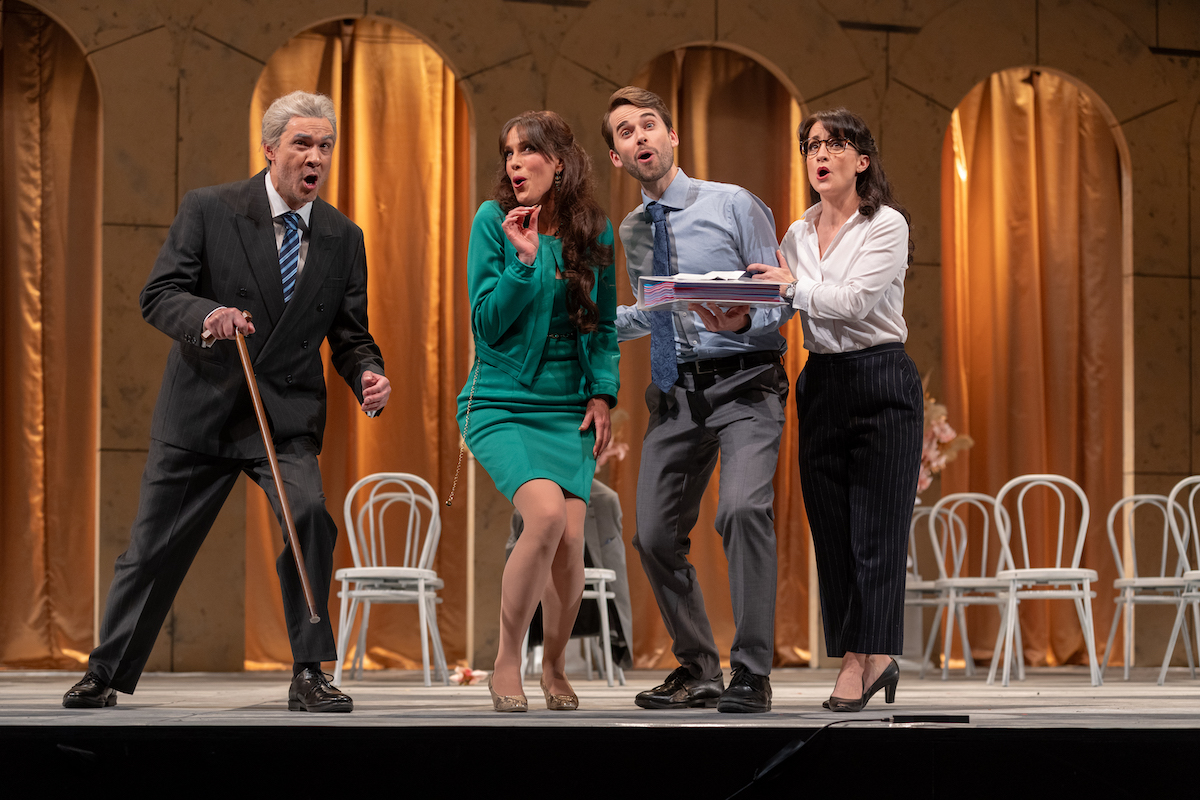Choosing to present Mozart’s The Marriage of Figaro in a modern setting, director Nicholas Cannon says (in his program notes) that its central themes of “classism, sexism and misogyny are just as relevant more than two hundred years later”.

Pelham Andrews, Cherie Boogaart, Jeremy Kleeman and Jessica Dean in The Marriage of Figaro. Photo © Andrew Beveridge
It is harder to follow his notion that Figaro reflects the problems within our own political system, though once pointed out, Ailsa Paterson’s set design can be seen as reflective of Canberra’s architecture, particularly in Act II (despite this being the most traditional of the production’s sets with its high windows and stately central chandeliers).
The opening set, Coburn-influenced floor patterns aside, could be any modern office, complete with dumpster bin, photocopier and filing cabinets – and yet it also contains a fold-down couch central to the first acts actions between Susanna and her husband-to-be, Figaro.
All male members of the cast are dressed in a variety of suits, as does Susanna herself. And yet Mozart and Da Ponte remain intact though their source, Beaumarchais’ play, as well as the libretto, loses the element of...










Comments
Log in to join the conversation.